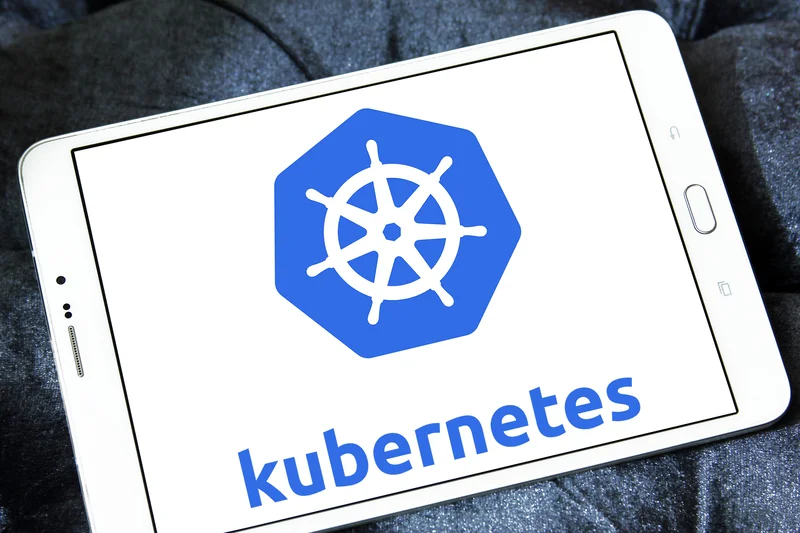What is Kubernetes and what are the advantages of it?

Software development using containers is becoming more popular every year. It is understandable because they make this process faster, flexible, and safer. You don’t need to rewrite other fragments of the code if you modify one part of the application.
By 2022, the expected market revenue is near 4,31 billion USD. The main advantage of containers is the possibility to increase the speed of developing applications. Also, this approach is more flexible. Businesses are changing regularly, and we need to adapt the software to this reality.
If we talk about cloud software development, all facts described above are also true. Kubernetes is an example of a successful solution in this sphere. It makes working with containers easier and flexible.
Today, we are going to answer “What is Kubernetes?” and “How can it help companies to earn money?”.
Basic Aspects of Containers
A container is the element of application development that allows increasing the productivity of the applications at the expense of packaging code. The advantages of it are the following:
- They reduce the time of app development and make configuration changing easier.
- They provide the ability to scale infrastructure quickly.
- They offer flexibility, so you can launch applications without significant differences in the final result both on your personal computer and cloud services.
The most frequent question is about the differences between virtual machines and containers. Beginners confuse them very often. The number of differences isn’t big but they are significant. They are the following:
- Containers need fewer resources for their work. It is useful for the efficiency of these solutions and budget.
- Containers provide less level of isolation because they use a core of the host system. You need to understand this fact if you want to use them. However, using Kubernetes, we can increase the level of safety.
Now, we understand what goals can be realized using containers. Next, we can consider one of the questions: What is Kubernetes?

We are confident that we have what it takes to help you get your platform from the idea throughout design and development phases, all the way to successful deployment in a production environment!
What is Kubernetes?
Kubernetes transforms a data center into one big computing resource. It allows us not to know what physical servers are in the base. You can launch software without it. Kubernetes chooses the server for each element autonomously and deploys it. Every component interacts with others, and it is easy to find it. Moreover, you don’t need to perform any changes to the application’s code.
Most importantly, Kubernetes allows the deployment and launching of any application in cloud data centers without system administrators of the cloud provider. It increases the level of safety of the process simultaneously saving time and other resources.
History of Kubernetes
About 30 years ago, a lot of applications were big and inflexible. They worked as one process or several processes distributed between different servers. All components of them were linked with each other. When you needed to change them, you had to modify the code of the application.
There weren’t any hard boundaries between the parts of the application, and the systems were becoming more and more complicated. Scaling was a huge problem. If even one part of the application became non-scalable, the entire application became non-scalable. Moreover, updating this application was a very difficult task.
These monoliths exist even now. However, the situation tends to cause more and more spreading of microservices. It helps to change components fast and keep the entire application relevant. However, this system is so complicated that it becomes hard to manage it. Due to this, developers needed automation.
Kubernetes managed to solve this problem. Now, developers can deploy applications by themselves and as often as required even without system administrators. This platform focuses on applications.

How does it work?
What is Kubernetes used for and how does it work? To understand the principle of Kubernetes work, let’s describe the microservices. They are the components of the application that are placed in different blocks. Usually, one block consists of only one component. You can develop, change, or update each of them at any time and it doesn’t affect the work of others.
Microservice interacts with other components using special API and protocols, such as HTTP and AMQP. They aren’t associated with any programming language and are understandable for all the developers. Every microservice can be developed using the language that is the most suitable for the realization of a certain component.
Every microservice is an autonomous process. For this reason, you can develop and deploy every component separately. You don’t need to change or deploy other services. Although, it works only if the API doesn’t change in a backward-compatible way.
One can scale processes separately for each process. It is possible to scale only the service that requires more resources and not to disturb others.
Components of a big application are developed by different teams. Each of them can use different libraries. It is a fact and there isn’t any problem with that.
It is a hard task to deploy dynamically linked applications with different versions of shared libraries. The more components we need to deploy on one host, the more difficult managing all the dependencies is. Microservices can help in this situation but they have their own disadvantages, such as:
- It is difficult to decide where to deploy every component because more links between components are created between them while adding new components.
- It is difficult to set components so that they freely “communicate» with each other and work as a single system.
- It becomes difficult to debug and trace execution calls as they span multiple processes and machines.
Containers can solve this problem. It is an isolated application with all microservices and other components. You launch it without depending on the platform and the system will work correctly. It is the main advantage of it.
The Kubernetes principle
If the application is big, it needs a lot of containers. Unfortunately, it is quite hard to manage them. Kubernetes automates this process. Managing containers is called ‘orchestration’. Everything you had to manage manually before Kubernetes was created, you can now delegate to this system. You can return an application to the previous version, increase power, or just update only one part of it.
K8s (the second name of Kubernetes) doesn’t work alone. It can launch services and applications in containers only with Docker, rkt, or runc.
How can Kubernetes be useful for the business?
Kubernetes technology is used in BigData projects (for example, Tinder, BlaBlaCar, etc.) and for processing small parts of information. You need to understand how it can be useful:
- Workload scalability. The level of success of an application’s work depends on how productive and scalable it is. Kubernetes is the system that allows applications and their infrastructure to be more scalable when workload increases and vice versa.
- Optimization of the spendings on IT. Automatic scaling of applications minimizes risks that some resources become unclaimed. Spendings become more clear and the efficiency of managing them grows.
- Fast launching of products on the market. By dividing the overall process into separate tasks and having teams that are flexibly managed and easily interact with each other, you can significantly reduce the time spent on development. The process of monitoring performance can be simplified.
- Portability. It isn’t a problem to transfer software between different platforms.
- Great security. Kubernetes uses built-in data encryption, the instrument for scanning for vulnerabilities and other capabilities.
- New releases of Kubernetes appear regularly.
Kubernetes vs. Docker, DevOps
One of the most frequent questions is about the difference between Kubernetes and Docker, DevOps. However, they are incomparable. The main reason is in the fact that these solutions are created for different goals.
Kubernetes vs. Docker
Docker is a popular platform for creating containers. It can be used with Kubernetes because they are compatible. This platform is the most popular: more than 75% of containers are launched in this environment. Kubernetes can help you to orchestrate containers.
The difference between Kubernetes and Docker lies in the fact that the last one is created for launching containers and the first one is created for orchestration.
Docker is also open-source technology. It is so popular that a lot of developers use this word as a synonym to the term «container».
The typical process of app development in the Docker environment has the following look. Developers install Docker and launch containers using the special instruction. You don’t need to have special equipment because Docker can be installed on the weakest device.
Kubernetes doesn’t substitute Docker.
At the end of each release cycle, the developers package the entire system and hand it over to the system administrators, who in turn, must deploy the system and continuously monitor the work process. In the event of a failure, the system has to be manually transferred to working servers – this is a stressful process for DevOps specialists who in the modern world link the development process and further maintenance of products.
Kubernetes and DevOps
If we talk about DevOps, it is incorporated in K8S. It allows teams to get the following advantages:
- Code delivery occurs with less time being spent.
- The resources management is more effective.
- The feedback loop is shorter.
- It allows us to get increased speed and safety.
Docker is compatible with the DevOps approach. You don’t need to worry about the productivity of this system.
The real example
We can understand the possibilities of Kubernetes if we consider an example. It is a company called SaM Solutions that created SaM CloudBOX Paas. It uses a combination of Kubernetes and Docker for performing containerization.
PaaS has an infrastructure that is flexible and scalable. It is suitable for any logic and information that is processed.
It uses processes that are managed by DevOps, instruments for deployment automation. This solution has these features:
- Ability to balance a load
- Self-repairing.
- Flexible management of identification and access
- Logging
- CI/CD.
There are a lot of similar applications that are created using Kubernetes. These advantages exist in a lot of them.
How to start using Kubernetes
There are three ways to implement K8s:
- Autonomously, but it requires additional spendings.
- Use one of the existing services for deployment automation.
- Delegate implementation to special companies.
Bottom line
What is Kubernetes? It is a great solution that can bring businesses a lot of benefits. It is easy to use, flexible, and has a lot of features. This platform is open-source, which allows a lot of people to adapt it to their needs.
Top Articles
The Boundaries of Artificial Intelligence: 7 Limitations of AI
I am here to help you!
Explore the possibility to hire a dedicated R&D team that helps your company to scale product development.






